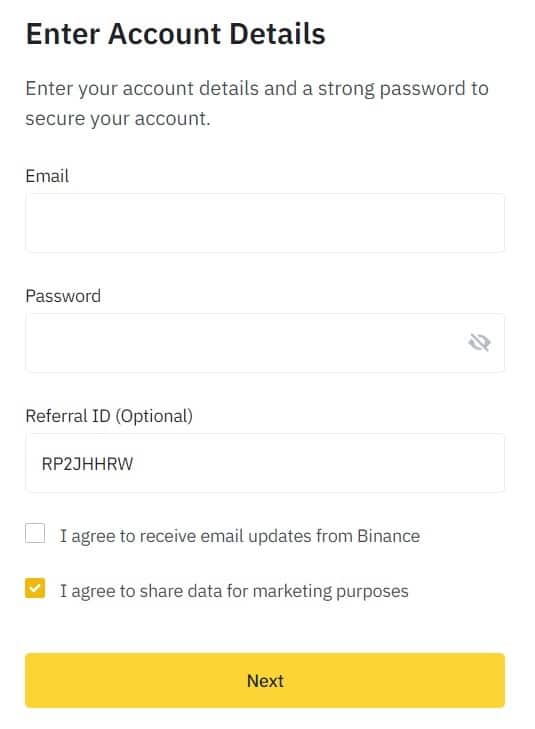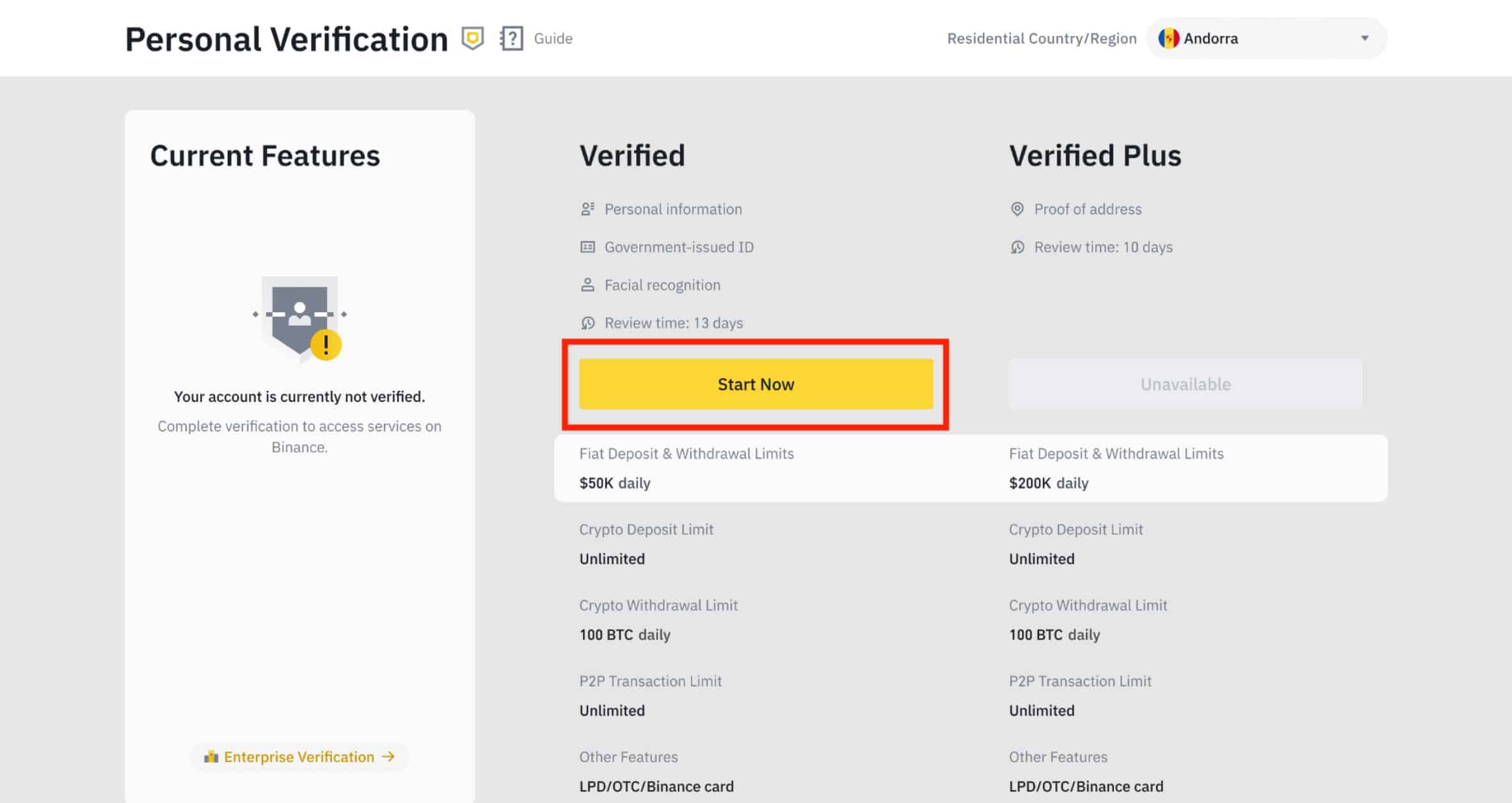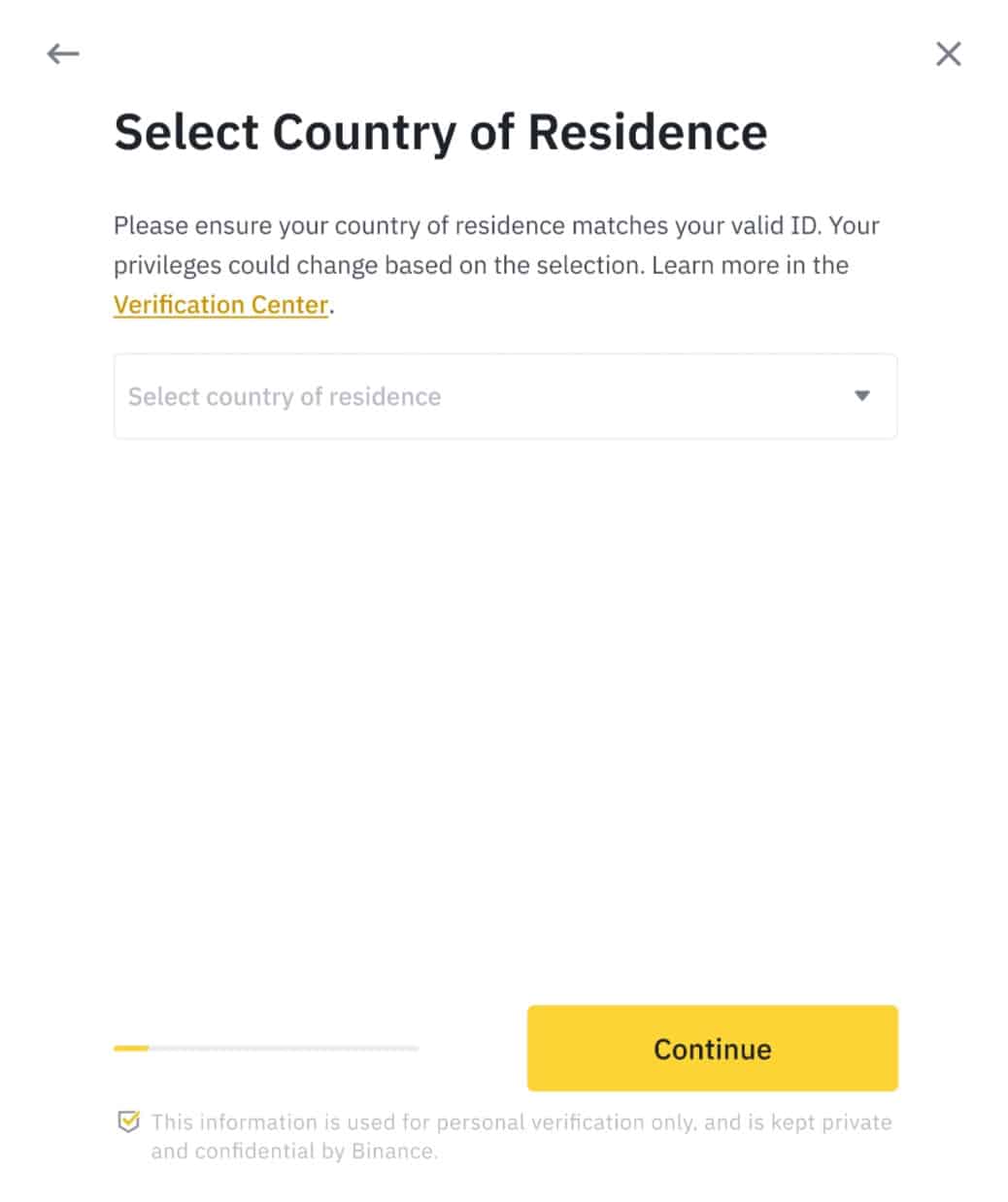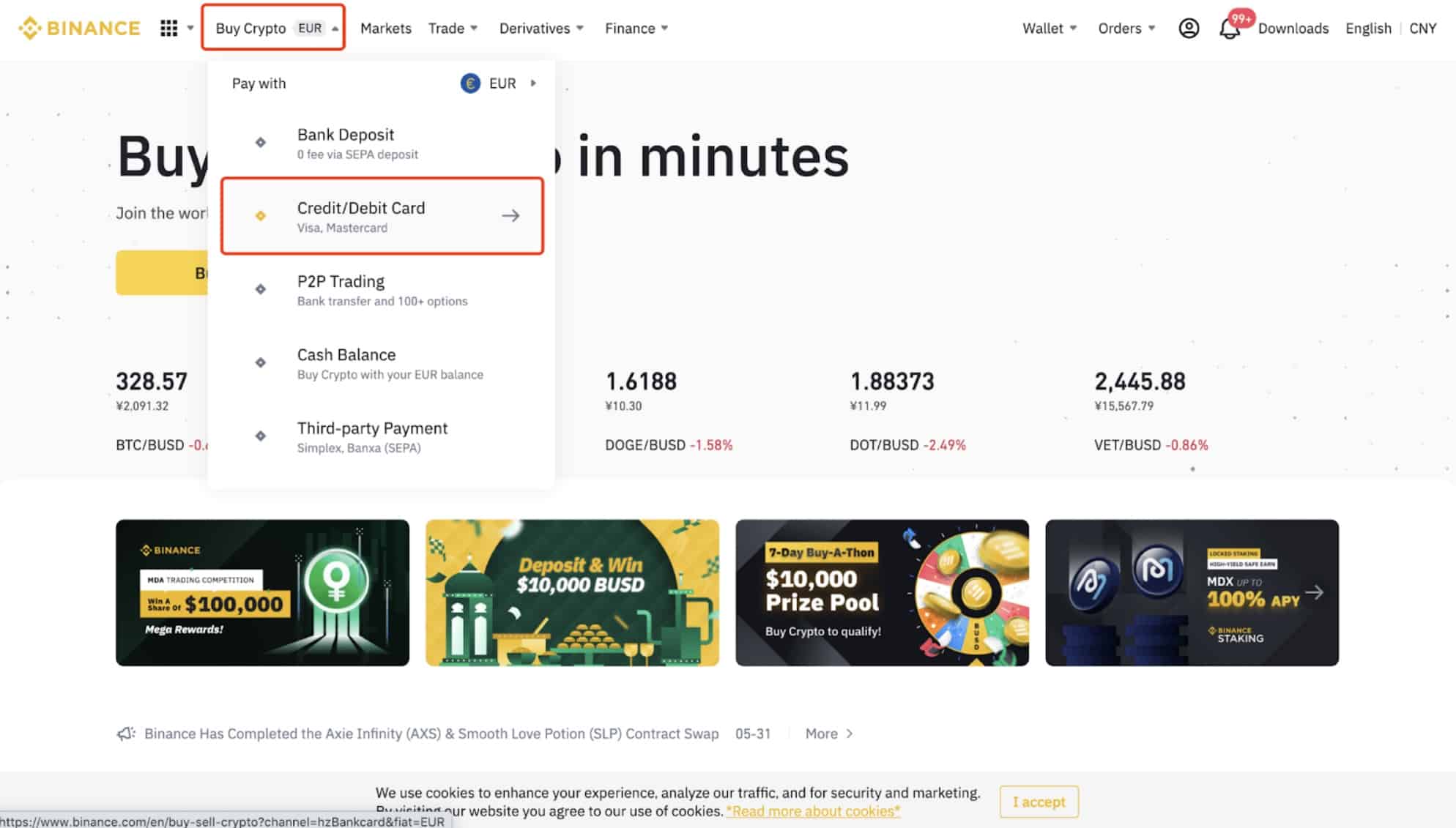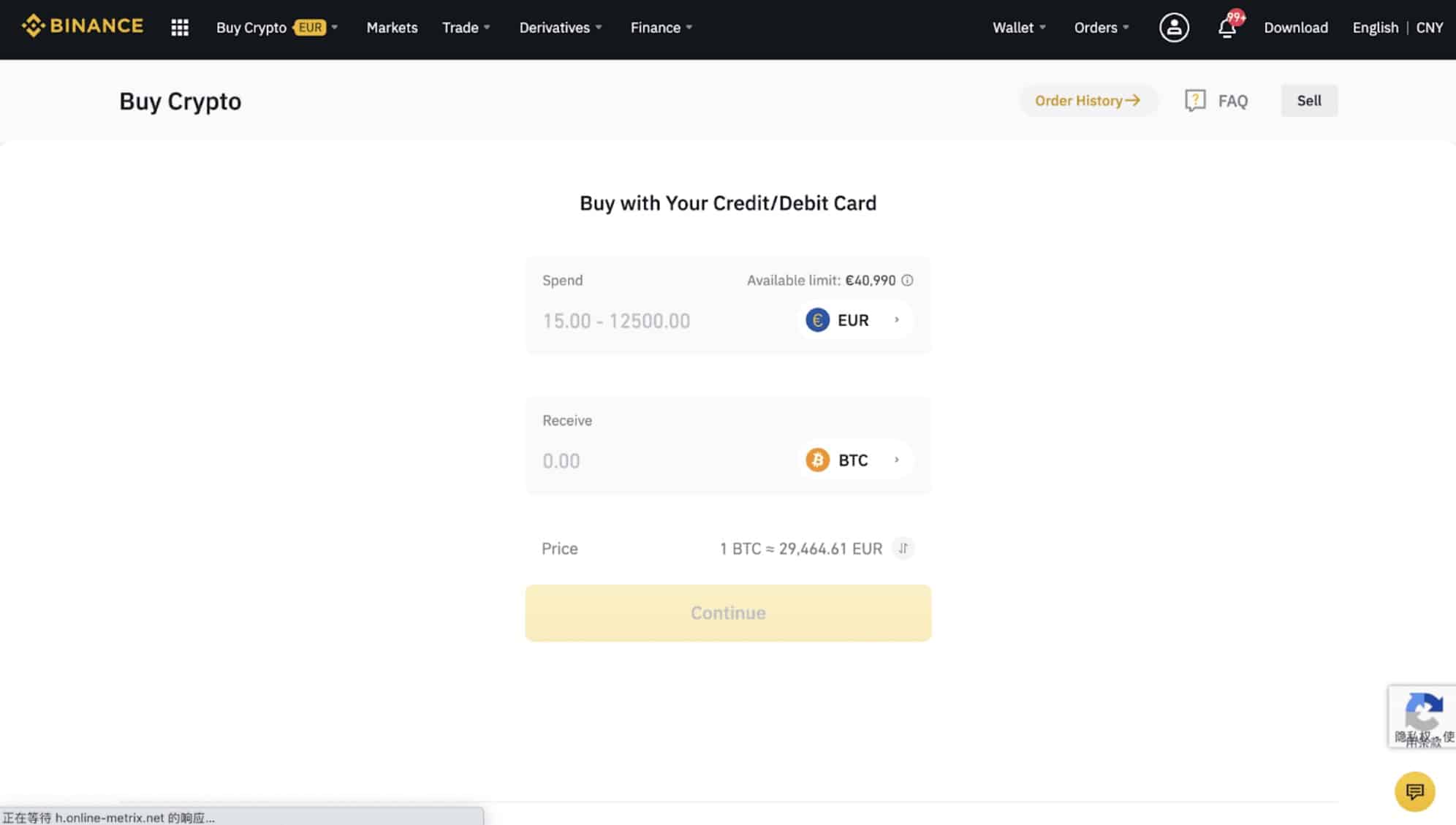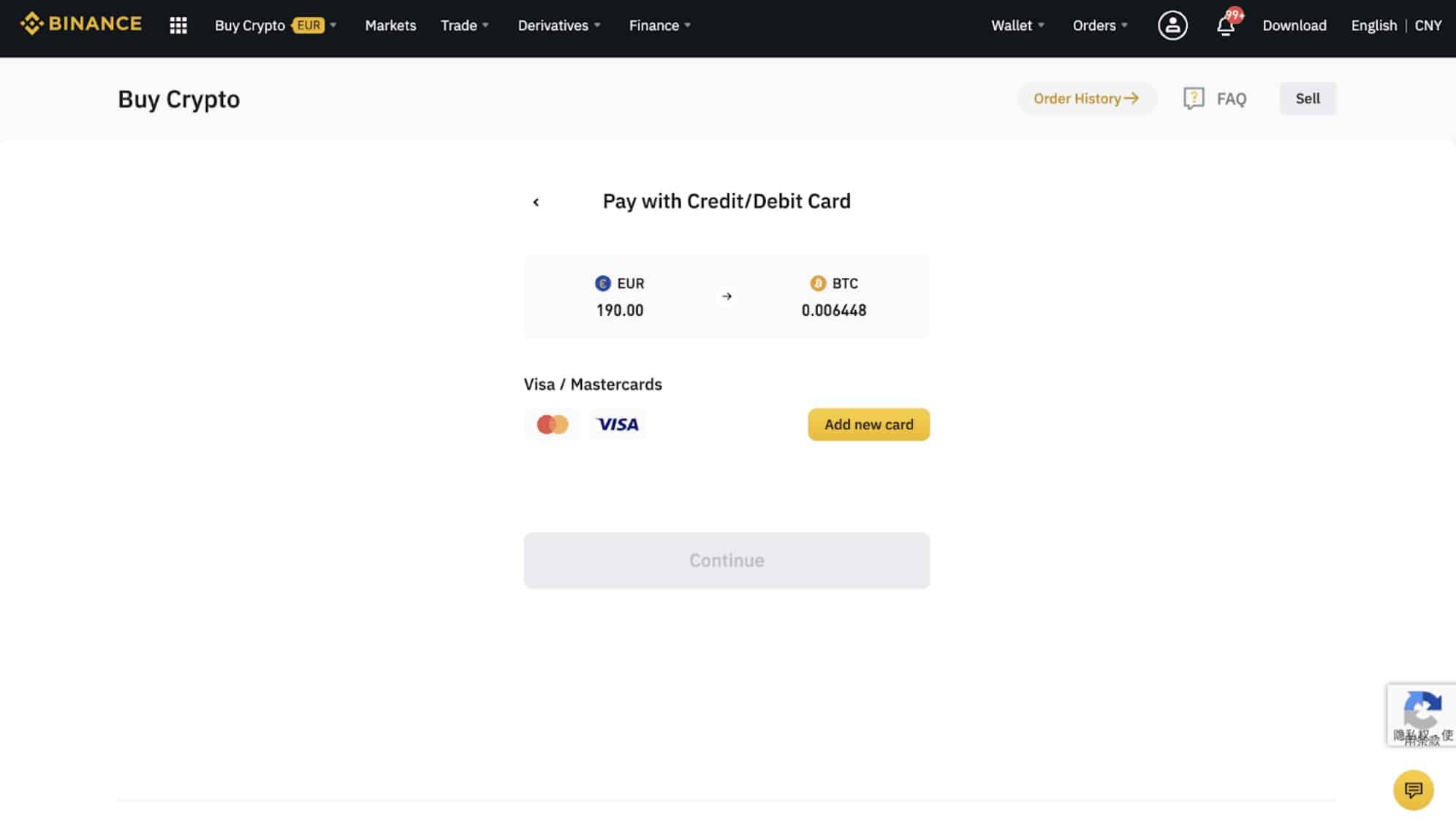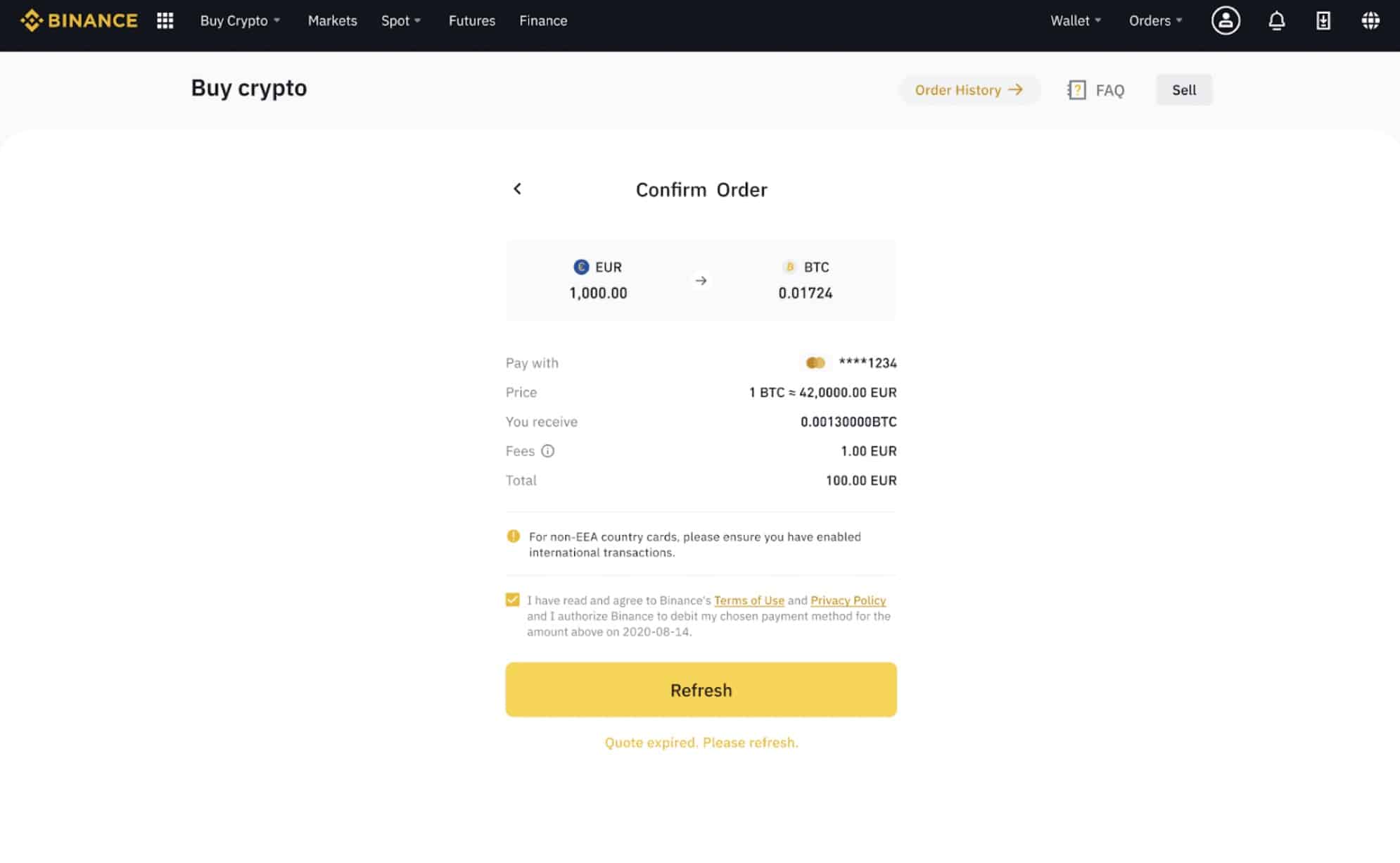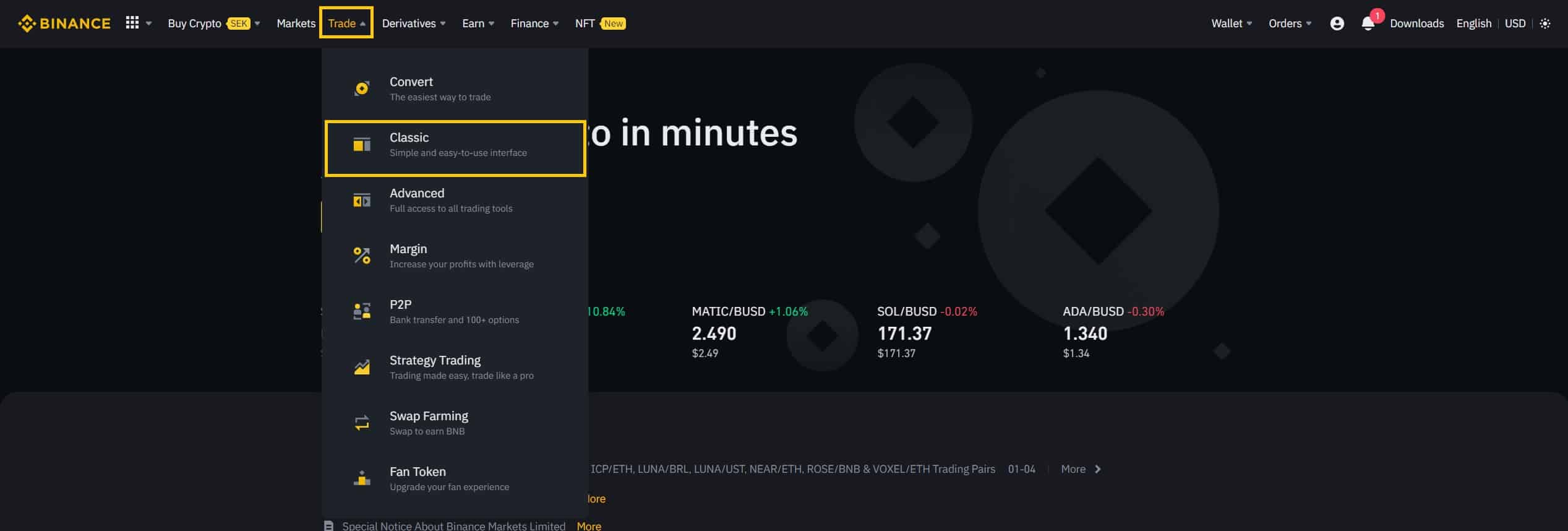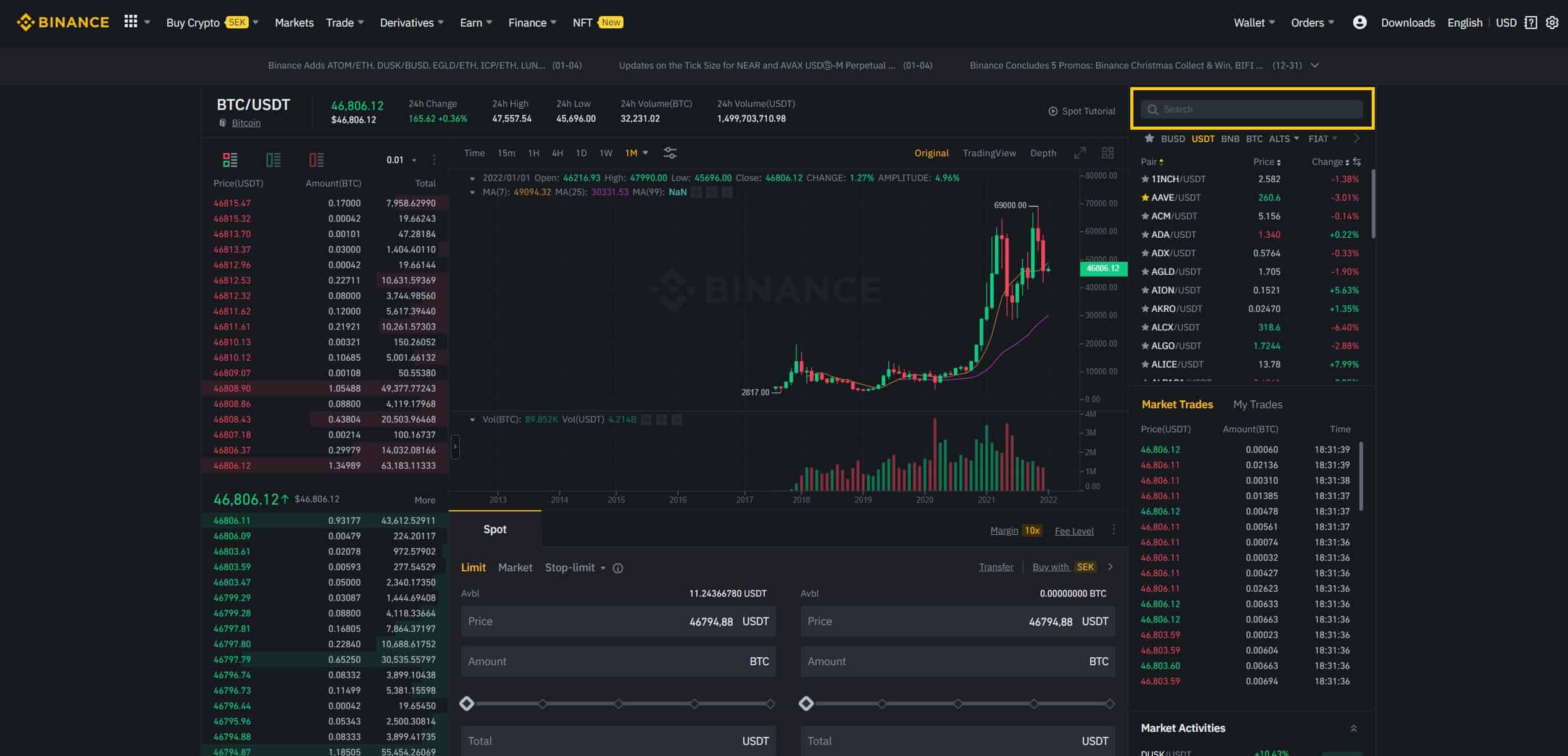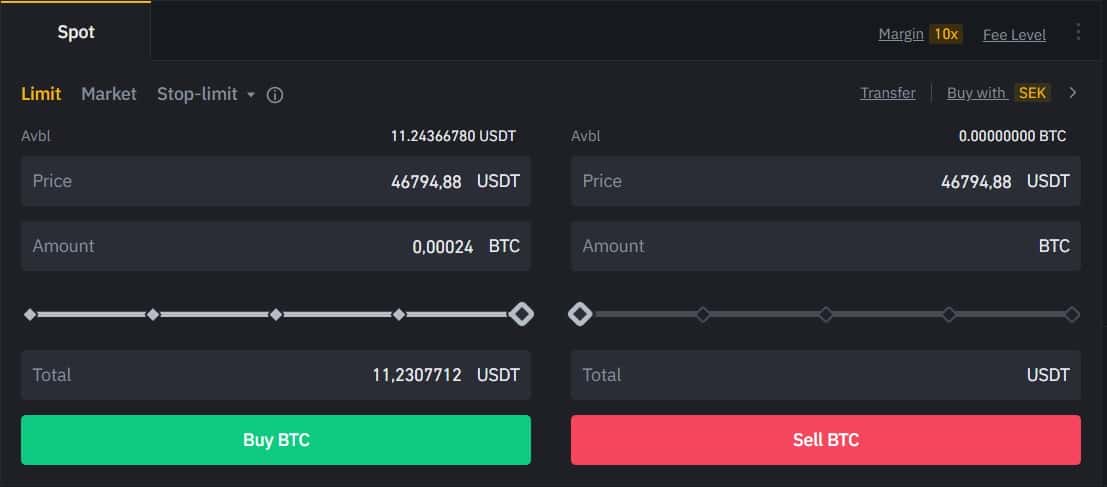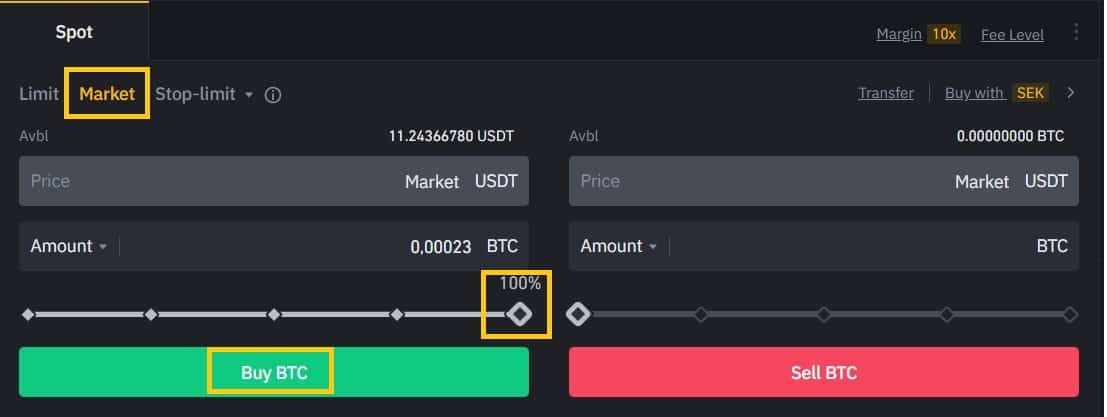How to buy Optimism (OP)

If you’re interested in purchasing Optimism (OP), this helpful step-by-step guide will show you how. We’ll walk you through the process so you can learn how to buy Optimism (OP) with ease. Whether you’re new to cryptocurrency or just looking to expand your portfolio, this guide can provide you with the information you need to get started. So why not give it a try and learn how to buy Optimism (OP) today?
Step 1: Create an account on an exchange that supports Optimism (OP)
First, you will need to open an account on a cryptocurrency exchange that supports Optimism (OP).
We recommend the following based on functionality, reputation, security, support and fees:
1
Binance
Fees (Maker/Taker) 0.075%*-0.1%*
Cryptocurrencies
Available for Trade 500+
Sign-up bonus
10% reduced trading fees*
Available in
Europe, Asia, Oceania, Africa
2
MEXC
Fees (Maker/Taker) 0.2%*-0.2%*
Cryptocurrencies
Available for Trade 1500+
Sign-up bonus
10% reduced trading fees & up to $170 in USDT vouchers*
Available in
North America, South America, Europe, Asia, Oceania, Africa
When you’re signing up for a cryptocurrency exchange, you’ll typically need to provide some basic information. This might include your email address, password, and full name. Depending on the exchange, you may also be asked for additional details like your phone number or address.
It’s worth noting that some exchanges have more stringent requirements, such as a “Know Your Customer” (KYC) procedure. This is typically the case with licensed and regulated exchanges. KYC procedures help ensure that exchanges comply with anti-money laundering (AML) and counter-terrorism financing (CTF) regulations. If you’re required to complete a KYC procedure, you’ll typically be asked to provide additional information, such as a government-issued ID or proof of address.
Step 2: Deposit funds into your account
When buying Optimism (OP) on a cryptocurrency exchange, many of them allow you to use fiat currencies like EUR, USD, and AUD to make your purchase directly. To do this, you’ll need to fund your account with one of several deposit methods, including credit and debit cards, e-wallets, and direct bank transfers. If this is not an option on the cryptocurrency exchange that you have chosen, then simply move onto the next step in this guide.
It’s important to note that different payment methods may have varying fees associated with them. For example, credit card payments may have higher fees than other options. To avoid paying unnecessary costs, it’s a good idea to research the fees for each payment method before funding your account.
Step 3: Buy Optimism (OP)
Buying Optimism (OP) on a cryptocurrency exchange is a simple process. Look for the search bar or navigation menu and search for Optimism (OP) or Optimism (OP) trading pairs. Next, find the section that allows you to buy Optimism (OP). Enter the amount of cryptocurrency you want to spend or the amount of fiat currency you want to use to buy Optimism (OP). The exchange will calculate the equivalent amount of Optimism (OP) based on the current market rate.
Before confirming your purchase, always double-check the transaction details, such as the amount of Optimism (OP) you’ll receive and the total cost of the purchase. Additionally, some exchanges offer a proprietary software wallet to store your Optimism (OP), but you can also create your own software wallet or purchase a hardware wallet for the highest level of protection.
How to create a Binance account
Show Detailed Instructions
Hide Detailed Instructions
Step 1: Go to the Binance website.
Step 2: On the registration page, enter your email address, and create a password for your account.
Then, read and agree to the Terms of Service and click “Create Account”.
Note: Your password must be a combination of numbers and letters.
It should contain at least 8 characters, one UPPER CASE letter, and one number.
Step 3: Complete the Security Verification.
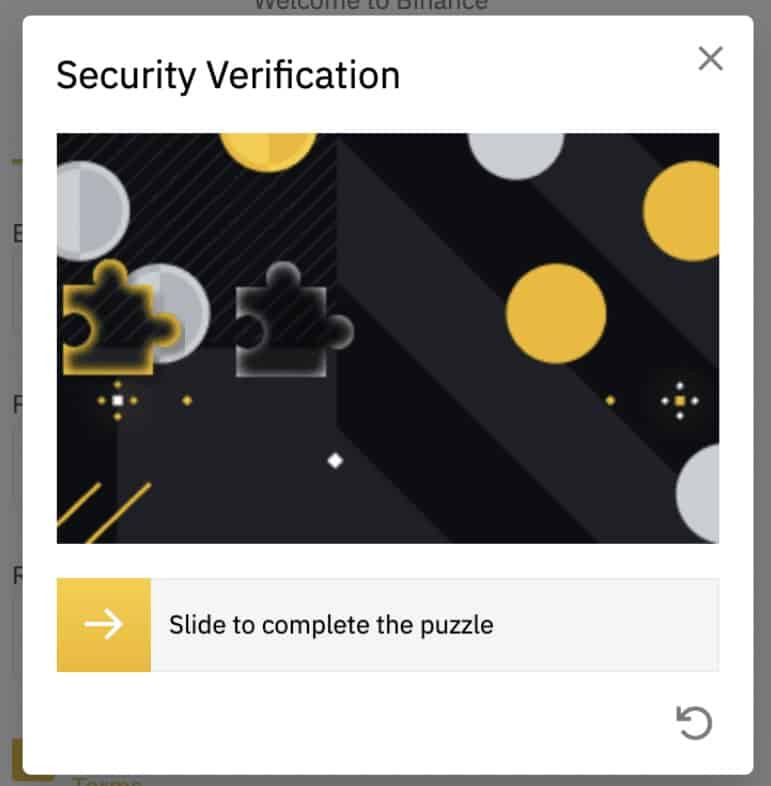
Step 4: The system will send a verification code to your email. The verification code is valid for 30 minutes. If you can’t find the email in your inbox, check your other mail folders as well, or click “Resend Email” to resend.
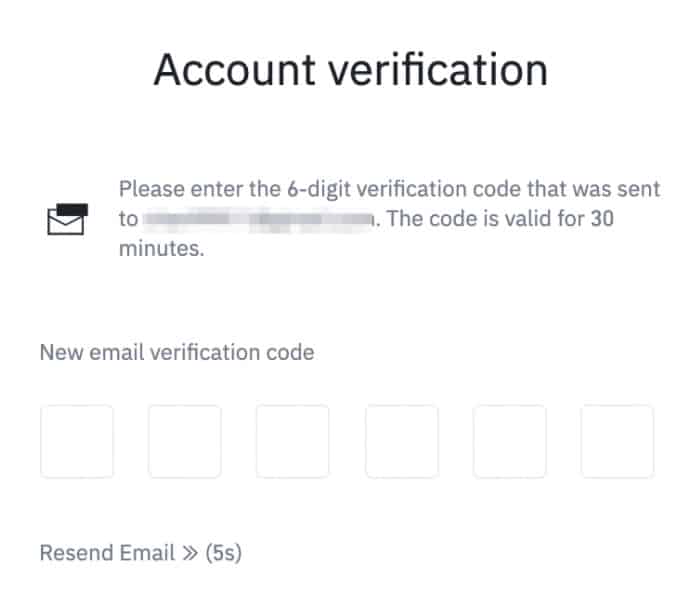
How to complete KYC (ID Verification) on Binance
Step 1: Log in to your Binance account and click “User Center” and then “Identification”.
Step 2: click “Start Now” to verify your account.
Step 3: Select your country of residence.
Ensure that your country of residence is consistent with your ID documents.
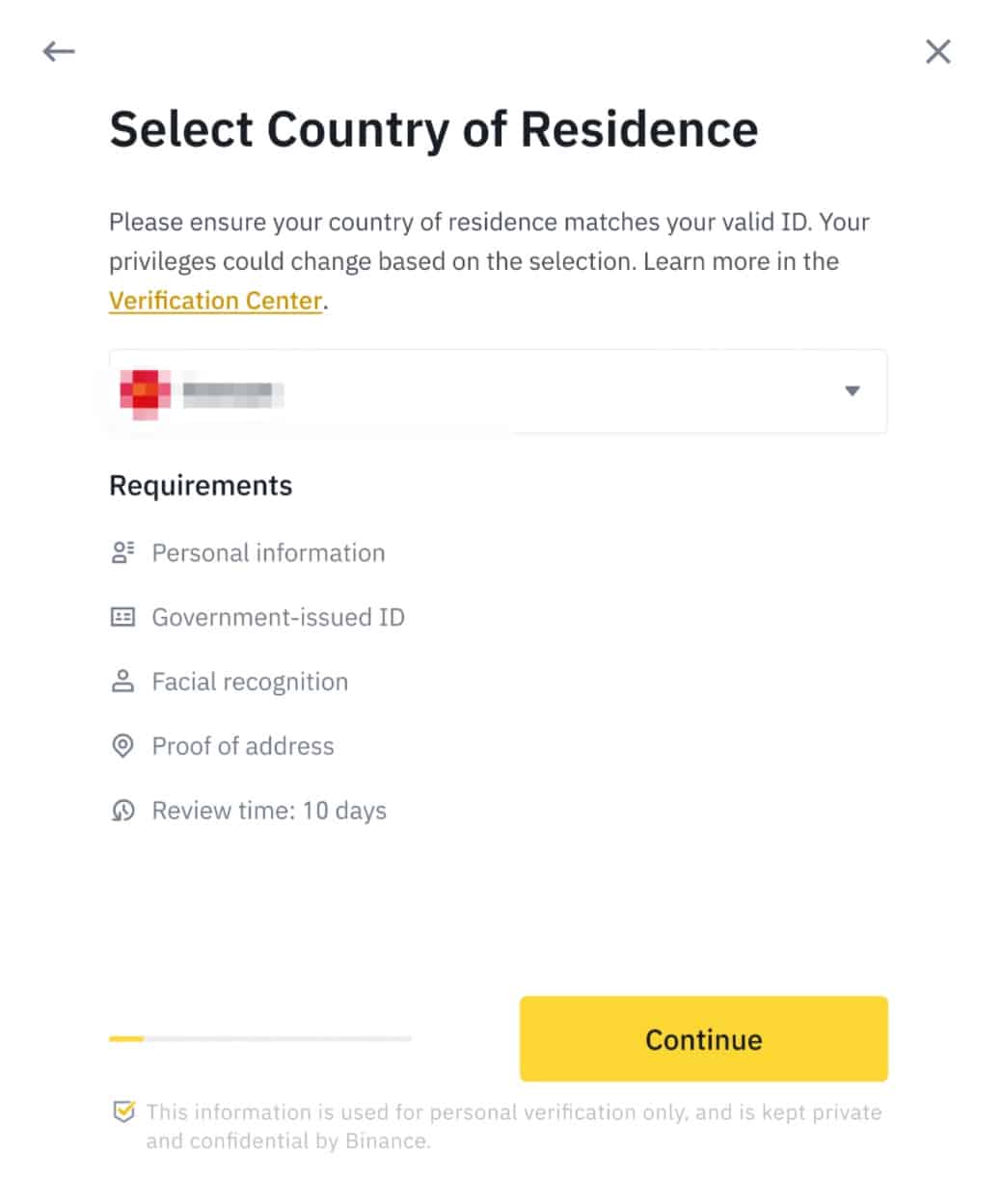
Step 5: Enter your personal information and click “Continue.”
You won’t be able to change it once confirmed.
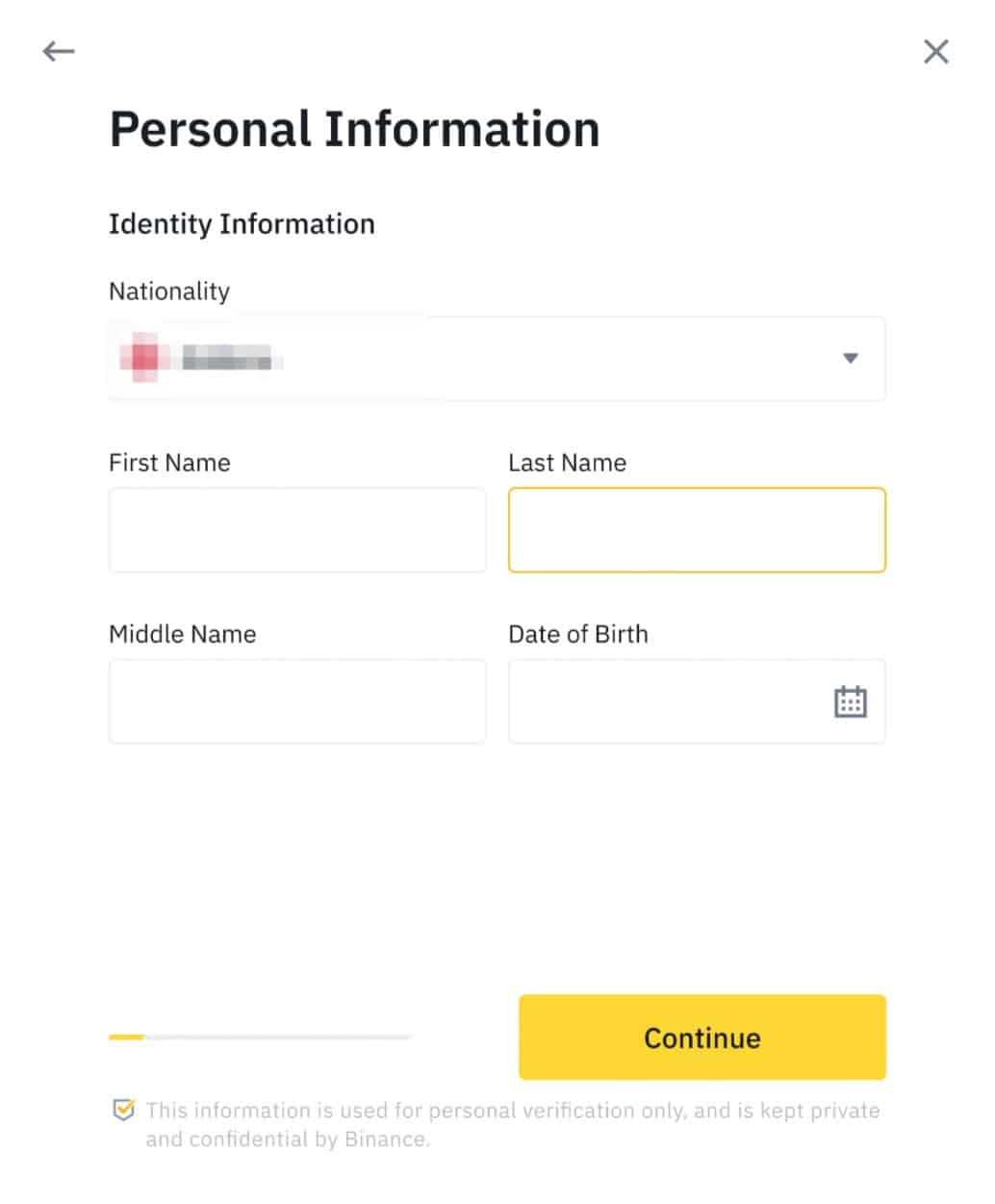
Refer to the respective options offered for your country.
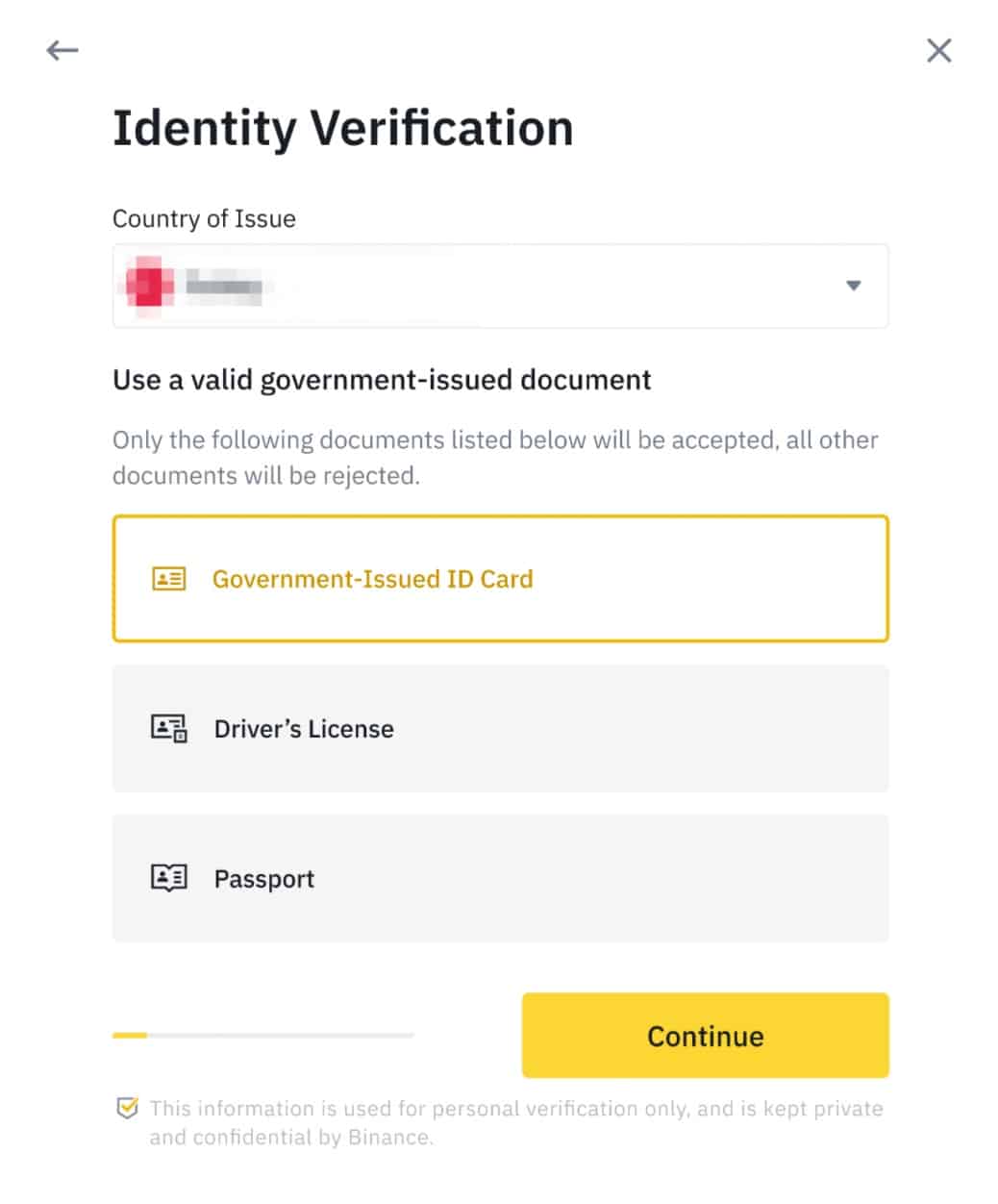
Step 7: Follow the instructions to upload photos of your document. Your photos should clearly show the full ID document.
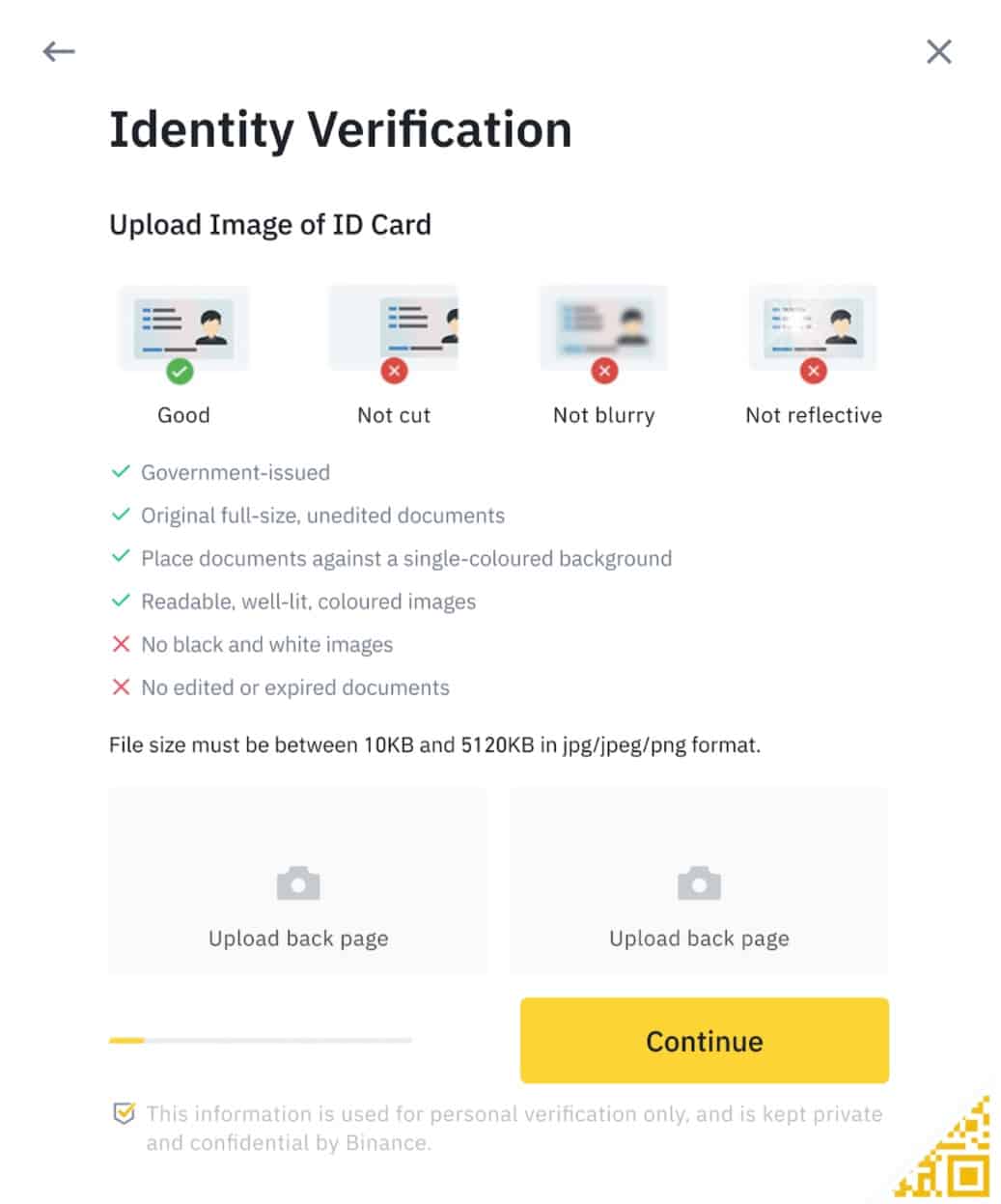

Do not wear hats, glasses, or use filters, and make sure that the lighting is sufficient.

Once your application has been verified, you will receive an email notification.
How to buy cryptocurrency on Binance
Step 1: Log in to your Binance account and click “Buy Crypto” and then “Credit/Debit Card”.
Step 2: Here you can choose to buy crypto with different fiat currencies. Enter the fiat amount you want to spend and the system will automatically display the amount of crypto you can get. When you have selected the amount you wish to spend then press “Continue”.
Note: You might not be able to purchase every cryptocurrency directly using fiat, if you’re looking to purchase something that isn’t offered in the currency list on this page, then you will want to purchase USDT. We will then show you how to exchange that on the spot-market for the cryptocurrency that you want in the next section of this guide.
Step 3: Click “Add New Card”. Then enter your credit card details and your billing address.
Step 4: Check the payment details and confirm your order within 1 minute. After 1 minute, the price and the amount of crypto you will get will be recalculated. You can click “Refresh” to see the latest market price. You will then be redirected to your bank’s OTP Transaction Page. Follow the on-screen instructions to verify the payment.
How to Conduct Spot Trading on Binance
Step 1: Log in to your Binance account.
Click on “Classic” under “Trade” on the top navigation bar.
Step 2: Search and enter the cryptocurrency you want to trade.
Step 3: Set buying/selling prices and buying/selling amount (or exchange total). Then click on “Buy”/”Sell”.
(Note: The percentages under the “Amount” box refer to percentages of the total account balance.)
Step 4: If you don’t want to set a manual price, you can place a “Market Order” to set the buying/selling price automatically.
Hide Detailed Instructions
If you’re looking for more detailed instructions on buying cryptocurrency, our “Absolute Beginner’s Guide to Cryptocurrency Investing” can take you through the process step-by-step. This guide also covers how to send and receive cryptocurrency.
If you’re brand new to the world of cryptocurrency, don’t worry! We offer beginner, intermediate, and advanced level articles to help you get up to speed with everything you need to know. These articles cover a wide range of topics, so whether you’re just starting out or looking to expand your knowledge, we’ve got you covered. With our resources, you can confidently navigate the cryptocurrency space and make informed investment decisions.
What is Optimism (OP)?
Optimism, an Ethereum scaling solution, plays a crucial role in ensuring that the main network runs seamlessly by sharing its transactional load. It is important to understand the concept of rollups and their significance in the Ethereum ecosystem to fully grasp Optimism’s role and functionality.
Rollups: Ethereum’s Scaling Solution for Enhanced Transaction Throughput
As one of the numerous scaling solutions designed to boost Ethereum’s transaction throughput, rollups execute transactions beyond layer 1, followed by data posting to layer 1, where consensus is achieved, as explained by the Ethereum Foundation. This approach not only alleviates the main network’s load but also ensures the native security of broadcasted information.
Two primary types of rollups exist, each differentiated by their security models:
- Zero-Knowledge (ZK) Rollups: These execute computation off-chain and submit proof of validity to the chain.
- Optimistic Rollups: By default, transactions are assumed valid and only undergo computation through fraud-proof if challenged.
Optimism falls under the second category, with Ethereum as its parent chain.
A Closer Look at How Optimism Works
The fundamental principles of the Optimistic Rollup – the concept that piques most people’s interest in Optimism – are crucial to understanding how the platform functions. In summary, an Optimistic Rollup refers to a blockchain designed to leverage the security of another network acting as a parent.
Block Storage: A Core Component of Optimism
Within a specific Ethereum-based smart contract called the CanonicalTransactionChain (CTC), all blocks on Optimism are stored in an append-only list. This CTC contract contains code that ensures the current list of blocks remains unaltered by newer transactions on Ethereum, with the exception of when the Ethereum network undergoes a reorganization (reorg), leading to a change in order.
Block Production: The Role of the ‘Sequencer’
As the single party responsible for managing block production on Optimism, the ‘sequencer’ facilitates instant transaction confirmations, state updates, construction and execution of layer-two blocks, and submission of user transactions to layer one. Transactions are accepted (or rejected) immediately and in the order they are received, without a mempool. Valid transactions are applied to the local state as pending blocks, which are then batched and submitted to the Ethereum network for finalization at periodic intervals.
The primary objective of batching is to lower overall transaction fees by distributing specific fixed costs across all transactions within a single batch. However, these fees may vary based on the network load at the time of sending transactions to the sequencer.
Block Execution: Optimism Nodes vs. Ethereum Nodes
While Ethereum nodes download blocks from the Ethereum peer-to-peer network, Optimism nodes obtain blocks directly from the CTC append-only contract. The Ethereum Data Indexer and the Optimism Client Software are the two main components of Optimism nodes. The former reconstructs the Optimism blockchain from blocks published to the CTC contract, while the latter, which closely resembles Geth, solidifies Optimism’s similarity to Ethereum in design due to the shared Ethereum Virtual Machine (EVM), account and state structure, gas metering mechanism, and fee schedule.
Fault Proofs: Key to the Optimistic Rollup
State commitments are published to the Ethereum network directly without requesting proof of validity in the Optimistic Rollup. When a state commitment is challenged, fault proofs are requested. A successfully challenged commitment is removed and eventually replaced.
Bridging Assets Between Layers: A Paramount Feature
As layer-two scaling solutions like Optimism necessitate swapping assets between layers, the official website provides a bridge that can be used with a Web3 wallet such as MetaMask. The process is straightforward, requiring confirmation of the amount and signing the transaction in your wallet. It is important to note that bridging assets from Optimism to Ethereum takes seven days. Users can choose from various networks to bridge tokens, but caution is advised when using centralized exchange bridges as Optimism only provides links to providers without endorsing them.
Optimism Governance: The Optimism Collective and the OP Token
The native cryptocurrency within the Optimism ecosystem is the OP token, and its governance is overseen by the Optimism Collective. Comprising companies, communities, and citizens collaborating to reward public goods and build a sustainable future for Ethereum, the Optimism Collective’s governance consists of two separate houses: The Token House and the Citizens’ House.
The Token House: A Key Governance Component
Following the launch of the OP token and the Token House, governance of Optimism began. OP tokens were distributed to hundreds of thousands of addresses that engaged in community-oriented behavior through the first airdrop. Members of the Token House deliberate, submit, and vote on various proposals, either directly or by delegating their voting power to a third party. These proposals include protocol upgrades, inflation adjustments, treasury appropriations, rights protection, and governance fund grants.
The Citizens’ House: A Non-Plutocratic Governance Experiment
The Citizens’ House is an experimental attempt at non-plutocratic governance, responsible for retroactive public goods funding. This brings us to the OP token, which was launched through an airdrop distributing 5% of the total supply to qualifying users, such as DAO voters, Multi-Sig signers, repeat Optimism users, and Gitcoin donors. Users can check their eligibility on the official claim page.
Future Airdrops and the OP Tokenomics
Optimism’s team has made a commitment to allocate 19% of the total supply of the native OP token for future airdrops. This strategic decision is designed to encourage user participation, foster community growth, and increase the overall adoption of the Optimism ecosystem.
Tokenomics: The Driving Force Behind Optimism’s Economy
The tokenomics of the OP token play a significant role in shaping the Optimism ecosystem’s economics. By understanding the tokenomics, users can gain a comprehensive insight into how the platform operates and maintains a sustainable economic model.
- Token Distribution: The allocation of the total OP token supply is divided among various stakeholders, including airdrops, community incentives, developers, and team members. This distribution model ensures that the interests of all parties involved are aligned and that the ecosystem thrives.
- Incentivization Mechanism: The OP token is designed to incentivize user participation and engagement within the Optimism ecosystem. Airdrops, staking rewards, and other incentive programs are used to attract and retain users, promoting healthy network growth and development.
- Governance: The OP token also plays a crucial role in the governance of the Optimism ecosystem. Token holders have the ability to vote on proposals or delegate their voting power, enabling them to actively participate in shaping the platform’s future.
- Utility: The OP token serves various purposes within the ecosystem, such as paying transaction fees, accessing premium features, and participating in governance decisions. As the platform evolves and expands, the utility of the OP token is expected to grow, driving demand and adding value to the token.
Optimism development updates in 2023
In 2023, Optimism (OP), a prominent Layer-2 scaling solution for Ethereum, has undergone several significant developments:
-
Strategic Leadership Enhancement: Optimism Foundation made a strategic shift in leadership by appointing Ryan Wyatt, former President of Polygon Labs, as the Chief Growth Officer of Optimism Unlimited Ltd. This move aims to leverage Wyatt’s expertise to drive blockchain development and ecosystem expansion.
-
Bedrock Upgrade: The Bedrock upgrade was a major technical enhancement for the Optimism network. This upgrade focused on making the blockchain more modular, simple, and closely aligned with Ethereum, which helps in processing transactions faster and more efficiently.
-
Growth in Token Value and Adoption: The OP token experienced a significant rally, reflecting growing investor confidence in Optimism’s technology, especially in the decentralized finance sector.
-
Integration with Binance’s BUSD: The integration of BUSD, a popular stablecoin, onto the Optimism network marked a significant milestone. This facilitated easier transactions across various blockchain networks and enhanced Optimism’s appeal to a broader range of users and investors.
-
Bedrock Hard Fork and Superchain Ambitions: The completion of the Bedrock hard fork was a step towards Optimism’s ambition to become a ‘Superchain’ – a network of interconnected mini-blockchains. This development aimed at improving transaction speeds, reducing costs, and increasing network reliability.
-
Market Response and User Adoption: Throughout 2023, there was consistent growth in network activity and user adoption on Optimism, indicating a growing preference for its solutions. Despite some fluctuations in token price, Optimism maintained a high market capitalization and social volume.
These developments highlight Optimism’s commitment to improving blockchain technology and expanding its role in the crypto ecosystem.
Official website: https://www.optimism.io/
Best cryptocurrency wallet for Optimism (OP)
Navigating the world of cryptocurrency wallets can be quite an adventure, as there are numerous options available to suit different needs. To find the perfect wallet for you, consider your trading habits and the level of security you require. Generally, there are two main categories of wallets: hot storage wallets (digital) and cold storage or hardware wallets (physical).
Each type of wallet comes with its own set of advantages and drawbacks, so there isn’t necessarily a one-size-fits-all solution. As you embark on your journey to find the best crypto wallet for your Optimism (OP) tokens, remember to keep an open mind and explore the features that align with your personal preferences and requirements.
When choosing the right wallet for your Optimism (OP) tokens, consider the following factors:
- Trading frequency: Hot wallets are generally more suitable for active traders due to their quick login capabilities, allowing for seamless buying and selling of crypto. Cold wallets, on the other hand, are better suited for those who make less frequent trades.
- Supported cryptocurrencies: Although not all wallets cater to every cryptocurrency, some of the best ones can trade a vast array of currencies, offering a versatile experience. Make sure the wallet you choose supports Optimism (OP).
- Security concerns: If you’re worried about potential hacking incidents, a physical cold wallet stored in a safe deposit box or a secure location at home provides the highest level of protection. However, if you’re confident in safeguarding your hot wallet, you might prefer its convenience.
- Associated costs: Investigate the costs of each wallet option. While many hot wallets are free to set up, cold wallets, being hardware devices, will require an upfront investment.
- Wallet features: While the basic functions of cryptocurrency wallets remain the same, additional features can distinguish one wallet from another. Hot wallets often come with advanced reporting tools, crypto market insights, and currency conversion capabilities. Security features can also be an essential factor when making your decision.
By considering all of these aspects, you’ll be better equipped to select the perfect cryptocurrency wallet for your Optimism (OP) tokens.
For a more in-depth overview of cryptocurrency wallets visit our “Cryptocurrency Wallets Explained” guide.
If you’re planning to handle larger amounts of crypto, investing in cold storage can be a wise decision. Two of the most popular cold storage options are the Ledger Nano and the Trezor.
Ledger creates cold storage wallets designed for users who prioritize security. Their wallets are physical devices that connect to your computer, and you can only send cryptocurrency from them when they’re connected. Ledger offers a range of products, including the Ledger Nano S and the Ledger Nano X, which features Bluetooth connectivity.
Trezor, a trailblazer in the hardware wallet industry, combines top-notch security with an intuitive interface and compatibility with various desktop wallets. This blend makes it suitable for both beginners and experienced users. Trezor has earned a great deal of respect within the Bitcoin community over time. They offer two primary models – the Trezor One and the Trezor Model T, which comes with a built-in touchscreen.
Optimism (OP) Price & Charts
- Market Capitalization And Daily Trading Volume
- Current Market Price Of Every Cryptocurrency Relative To USD (And Some Local Currencies)
- Circulating And Total Supply
- Historical Charts With Prices Relative To USD, Bitcoin (BTC), And Ethereum (ETH).




